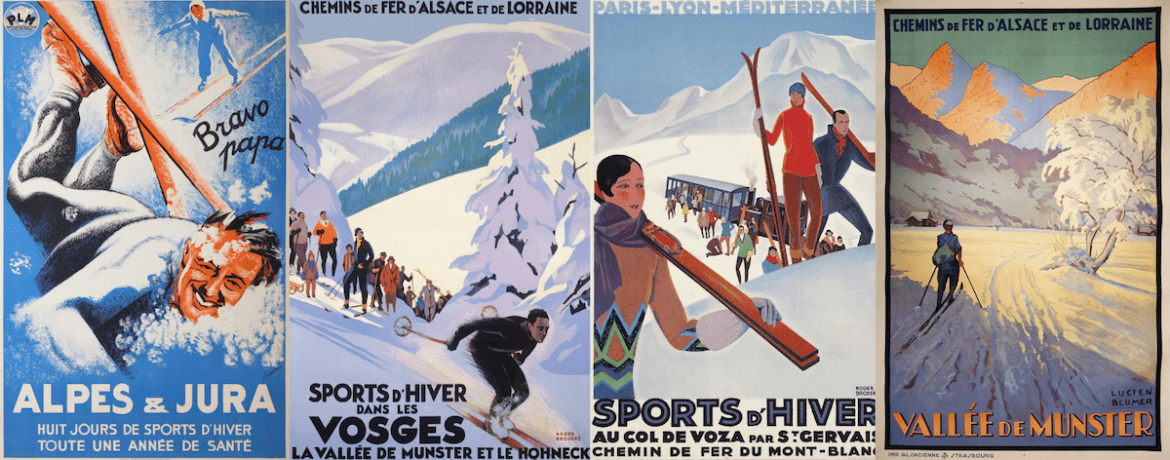While the height of winter can sometimes seem rather slow, it’s this time of the year when many thrill-seekers, chalet-lovers and après-ski enthusiasts race to the slopes. Sporty-chic French people from all around the country flock to the Alps during these chilly months to get in on the adventure, imbuing a substantial amount of jealousy from those missing out on the snowy oasis.
SUBSCRIBE TO THE MAGAZINE
This fervor around the glamor of skiing makes a winter vacation to the French Alps seem like a highly desirable escape today, but this was not always the case… Getaways to the likes of Chamonix and St. Moritz were always popular in the hot summer months, but back in the 19th century, most French resorts used to shutter for the winter. However, with the expansion of rail travel paired with the exciting, new marketing tool – full-color lithography – everything began to change.
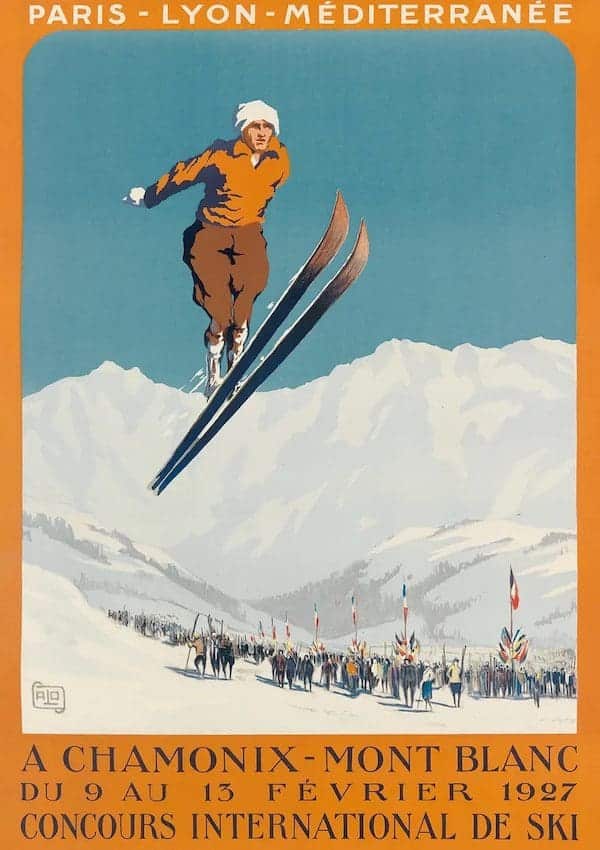
To increase business and promote travel, railway companies, tour operators and resorts hired graphic artists to design colorful posters to showcase popular mountain activities, which were then plastered on the walls of train stations across Europe. It was not long before these enticing works of art piqued travelers’ interest in France’s winter wonderlands and began popularizing les sports d’hiver (winter sports).
Over the years, these affiches (posters), initially mere advertisements, attracted the sharp eyes of collectors around the world. Through these artworks, we can track the history of winter travel, sports technology and slope fashion over time.
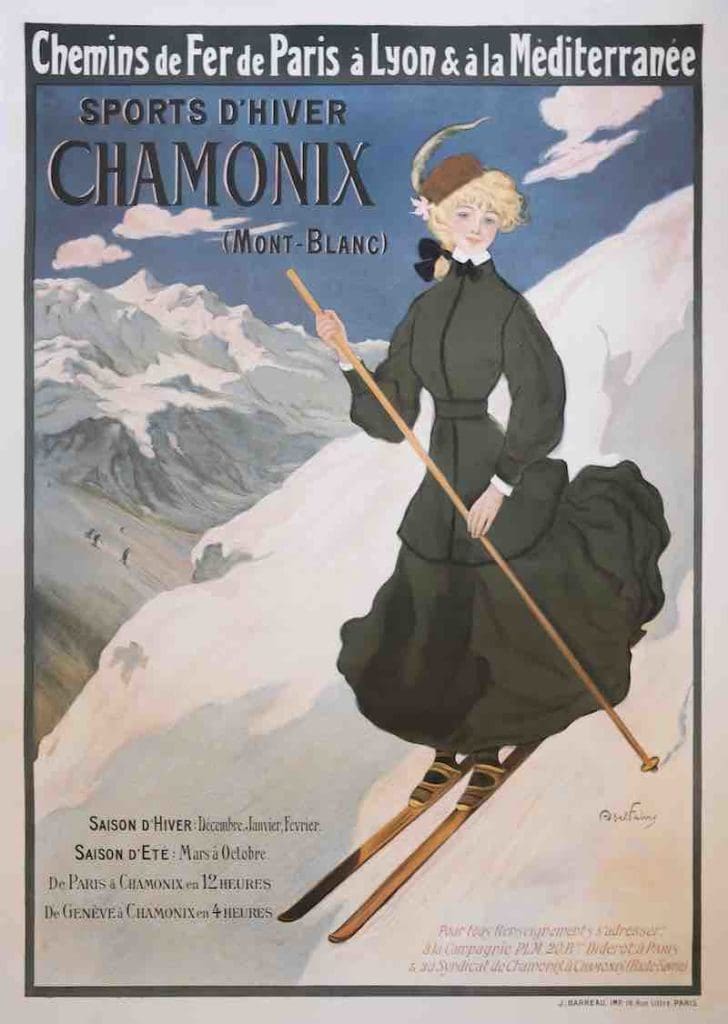
The first to appear, in the early 1900s, were not aimed at attracting athletes, but rather the upper class, which is why the posters often portrayed subjects enjoying a glittering social life against a backdrop of stunning mountain landscapes. The promise of fresh air and bright blue skies – accompanied by spas and glamorous entertainments – drew many of France’s urban élite away from the dreary cities in the dull winter months.
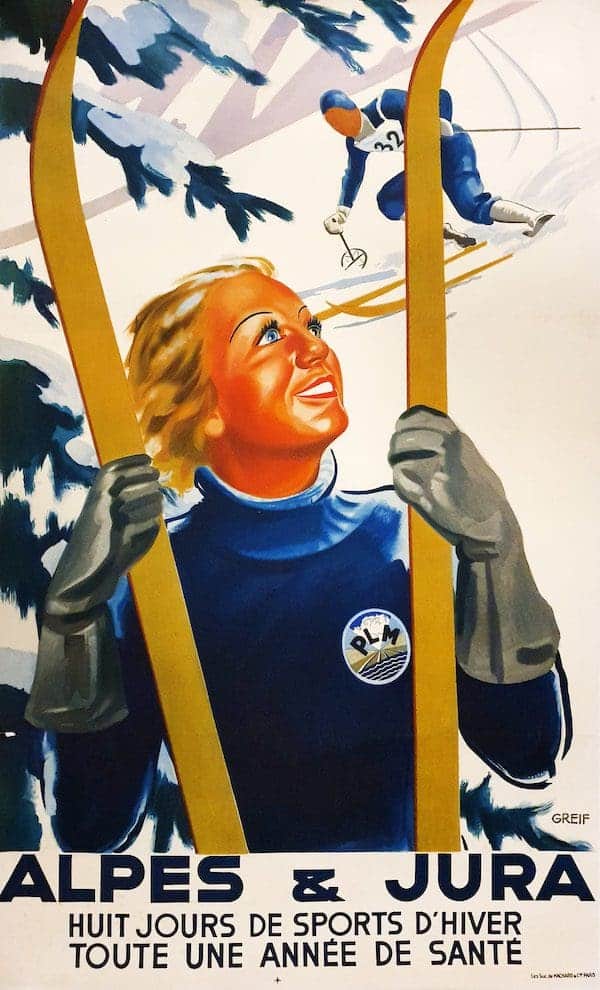
As years went on, interest in these snowy vacation destinations only increased. Rail travel became more accessible, and word of the mountain magic was spreading. Resorts and travel agencies started to invest heavily into these destinations – both in their physical enhancements and their promotion. Ski equipment technology was also evolving, and sports d’hiver travel posters made the activities look both interesting and alluring.
Once a challenge reserved for daredevils, downhill skiing started becoming much more popular in France in the 1920s and 30s. In fact, the first ever Winter Olympics was hosted in Chamonix in 1924!

Sports d’hiver posters in the 1920s showcased more muted colors, depicting adventure shots of wild sportsmen (and sportswomen). The 1930s saw a transition from understated Art Nouveau-style to bold Art Deco, as big businesses wished to position skiing and winter travel as something that was widely accessible. This style stuck into the 1940s and 1950s, before transitioning to photography in the 1960s.
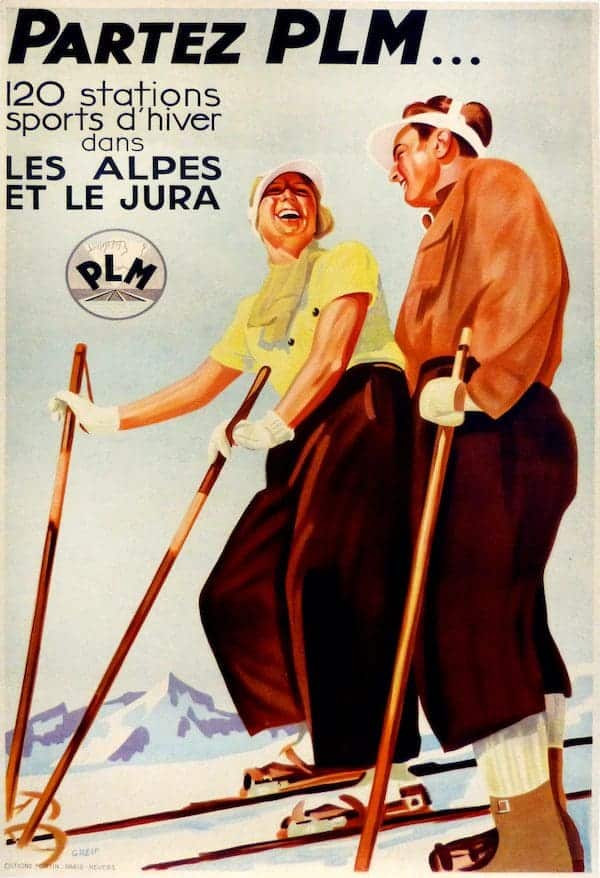
The expansion of winter sports led to technical advancements such as mechanical chair lifts, as well as new winter garment materials and accessories that were as fashionable as they were practical. Travel promoters made sure to commission advertisements of the developments in all things “ski” just as quickly as they came out, showing the world that anyone can participate in sports d’hiver.

Thanks to these beautiful advertisements, winter tourism in France boomed, and some of the most magnificent travel destinations in existence can be found tucked away in the country’s once inaccessible mountain ranges. Today, these posters allow us to travel back in time and still inspire that sense of adventure and infinite possibility.
**This article was featured in the January/February 2023 edition of the MFCH Magazine. For more articles like this, subscribe here!
Photos courtesy of posterissim.com

